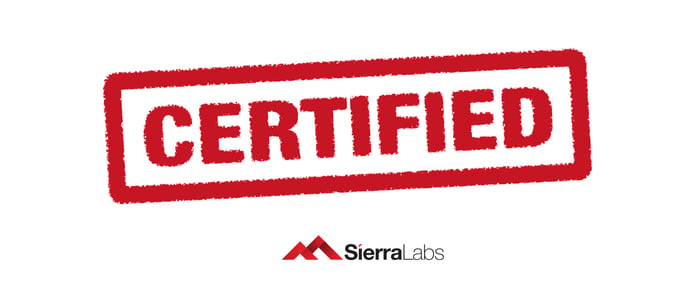What should be on your radar while tackling GxP Cloud Validation.

It's a fairly universal agreement that in today’s day in time, switching to the Cloud is imperative for all businesses.
Cloud systems are:
- Fast
- Flexible
- Scalable
- Easy to backup/archive
- Low cost (compared to traditional internal servers)
Adoption to Cloud systems is quickly spreading to most industries, but is slow to take off in the Life Science space. Why is that you ask? Regulations and compliance.
In the regulated space, businesses have to worry about mandatory audits, data security, patient privacy, and lack of clear guidance for Cloud. Although, GAMP®5, the latest ISPE guidance document, has added some clarity around good practices for Cloud in the regulated market.
The best thing you can do to prepare is to choose the RIGHT Cloud provider the first time around. Don’t fail your first audit before investing the time to find a provider that will assure your GxP Cloud Validation.
Here are 3 crucial steps in finding the optimal GxP Cloud provider in the regulated marketplace.
- Make sure your provider has experience and success with delivering GxP application in the Cloud.
- Verify that the cloud service provider is qualified or certified under the required standards relevant for the domain.
- Understand that the certifications and standards are limited to the services offered by the provider.
To download this blog as Cheat Sheet, Click Here!

Now let’s dive deeper into each of those steps!
1. Make sure your provider has experience and success with delivering GxP Application in the Cloud.
Earlier we touched upon how different it is to operate a Cloud system in this domain. Your provider should know how to service a Cloud in the regulated industry.
They should be familiar with the various rules and regulations that need to be met, and have experience in passing FDA audits with past clients.
Most cloud providers will offer “out of the box” validation packages, suggesting that the system’s features alone will complete your validation processes. These packages typically include:
- User Requirements Specification
- Operational Qualification
- Functional Requirements Specification
- Operational Qualification
- Validation Plan
- Trace Matrix
- Test Evidence
- Summary Reports.
Your cloud validation package, at a minimum, should at least be able to maintain FDA 21 CFR Part 11 compliance and include appropriate documentation to present to auditors, such as electronic records management, electronic signature, etc.
It is important to note that an “out of the box” validation package alone will not fully replace your current validation processes. It will only help to reduce the amount of time and money you spend on validation. In other words, it will serve as a helpful additive, but the package alone does not complete your validation.
Actionable tips:
Tip #1: When looking for a provider, be sure to ask the provider which rules and regulations are supported with their Cloud system.
Tip #2: Ask for a preview or demo of the validation packet and make sure that it will be able to support your internal validation processes.
Tip #3: Inquire if the provider offers validation services. If they do, this shows they are experienced with validation and compliance.

2. Verify that the cloud service provider is qualified or certified under the required standards relevant for the domain.
Your cloud infrastructure that you have built your application on must be qualified in order to pass compliance. Your Cloud provider should be able to provide evidence that their cloud system is qualified.
Don't be shy, ask for the evidence that the provider’s cloud platform is qualified! You can do this by requesting to see their compliance certifications, and they should be comfortable doing so.
Actionable tip:
Make sure to ask if they have these important certifications:
- HIPAA - The Health Insurance Portability and Accountability Act, Privacy and security surrounding medical data and information.
- ISO 27001, 27017, 27018 - A standard that requires information security and ensures office sites, support centers, development centers, and data centers are being securely managed.
- SOC 1, SOC 2, SOC 3 - Data controls surrounding confidentiality, availability, and security.

You will only be as validated as your Cloud validation package allows, unless you put in the extra validation work with your internal team as well. As mentioned earlier, an “out of the box” validation package alone will not fully replace your current validation processes.
Your Cloud system will only be able to validate the base functionality of your product, and any specific changes will call for additional validation effort from your business.
Actionable tip:
Take note of the changes that will require additional validation so you do not fail your audit:
- Custom extension via API
- Integration with other applications
- Customer-specific configuration

A GxP Cloud Solution
Finding the best GxP Cloud validation system for your business can be tricky, but by following the above steps, you can be sure that you choose the right provider the first time around.
If you are looking for a Cloud validation system that checks all of the boxes of the 3 crucial steps listed in this blog, check out Sierra Cloud!
Sierra Cloud is the first validated GxP system that allows for continuous compliance, completely abstracted from the Cloud environment. This means it can be attached to any Cloud system of your choice and make it compliant!
This system offers a solution to have a fully automated GxP compliant Cloud environment for all regulated workloads, a feat that no other Cloud validator has yet to achieve. It accounts for change control and documentation processes that meet all of your requirements.
It allows you to manage your Cloud policies and requirements, run validation/qualification tests, and generate audit-ready documents, all while staying fully GxP compliant.
We will continue to dive deeper and deeper into GxP Cloud computing in future blogs so stay tuned!
Want to achieve a GxP validated Cloud?
Download our free White Paper to learn how!


